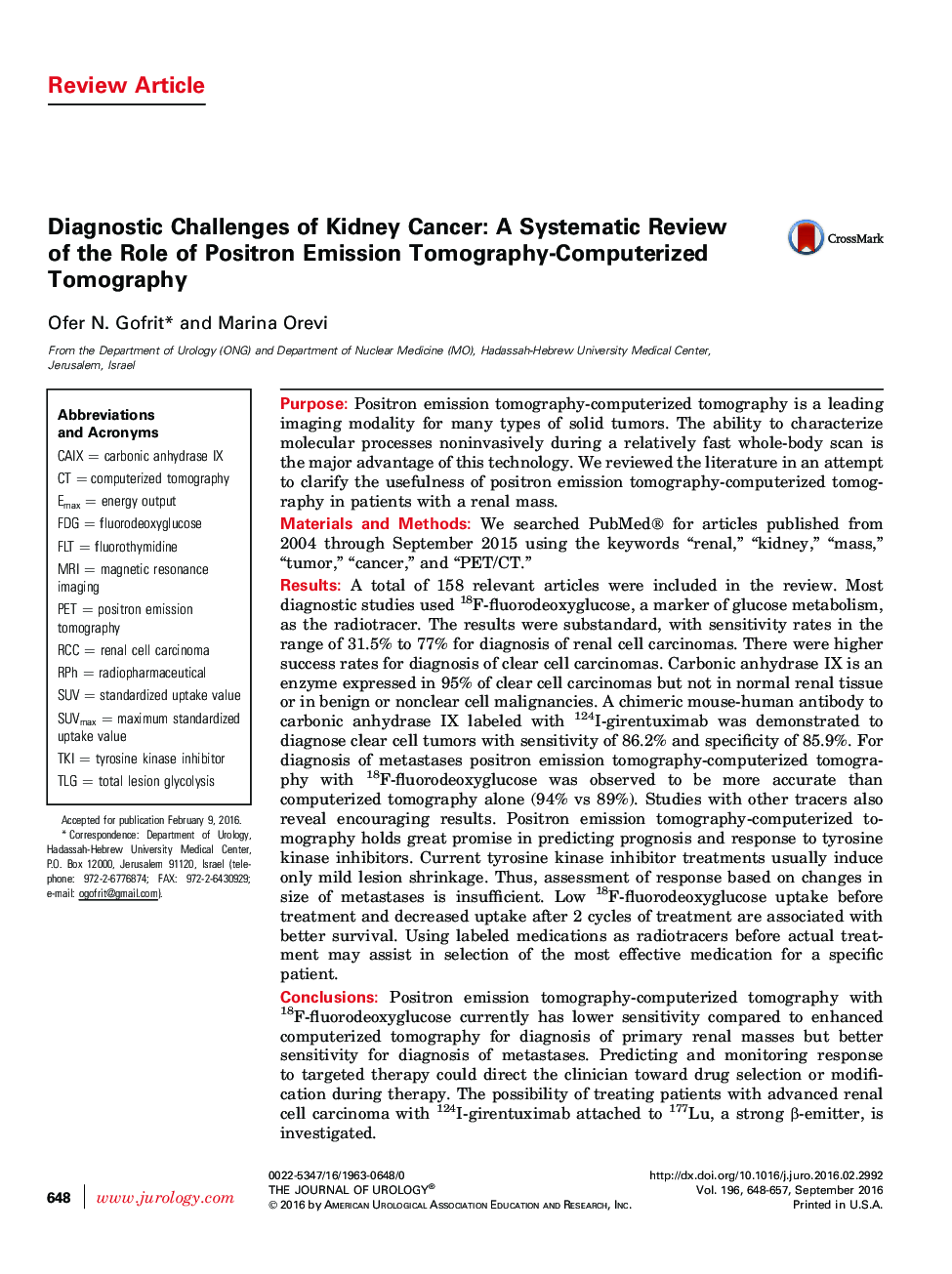| Article ID | Journal | Published Year | Pages | File Type |
|---|---|---|---|---|
| 3857817 | The Journal of Urology | 2016 | 10 Pages |
PurposePositron emission tomography-computerized tomography is a leading imaging modality for many types of solid tumors. The ability to characterize molecular processes noninvasively during a relatively fast whole-body scan is the major advantage of this technology. We reviewed the literature in an attempt to clarify the usefulness of positron emission tomography-computerized tomography in patients with a renal mass.Materials and MethodsWe searched PubMed® for articles published from 2004 through September 2015 using the keywords “renal,” “kidney,” “mass,” “tumor,” “cancer,” and “PET/CT.”ResultsA total of 158 relevant articles were included in the review. Most diagnostic studies used 18F-fluorodeoxyglucose, a marker of glucose metabolism, as the radiotracer. The results were substandard, with sensitivity rates in the range of 31.5% to 77% for diagnosis of renal cell carcinomas. There were higher success rates for diagnosis of clear cell carcinomas. Carbonic anhydrase IX is an enzyme expressed in 95% of clear cell carcinomas but not in normal renal tissue or in benign or nonclear cell malignancies. A chimeric mouse-human antibody to carbonic anhydrase IX labeled with 124I-girentuximab was demonstrated to diagnose clear cell tumors with sensitivity of 86.2% and specificity of 85.9%. For diagnosis of metastases positron emission tomography-computerized tomography with 18F-fluorodeoxyglucose was observed to be more accurate than computerized tomography alone (94% vs 89%). Studies with other tracers also reveal encouraging results. Positron emission tomography-computerized tomography holds great promise in predicting prognosis and response to tyrosine kinase inhibitors. Current tyrosine kinase inhibitor treatments usually induce only mild lesion shrinkage. Thus, assessment of response based on changes in size of metastases is insufficient. Low 18F-fluorodeoxyglucose uptake before treatment and decreased uptake after 2 cycles of treatment are associated with better survival. Using labeled medications as radiotracers before actual treatment may assist in selection of the most effective medication for a specific patient.ConclusionsPositron emission tomography-computerized tomography with 18F-fluorodeoxyglucose currently has lower sensitivity compared to enhanced computerized tomography for diagnosis of primary renal masses but better sensitivity for diagnosis of metastases. Predicting and monitoring response to targeted therapy could direct the clinician toward drug selection or modification during therapy. The possibility of treating patients with advanced renal cell carcinoma with 124I-girentuximab attached to 177Lu, a strong β-emitter, is investigated.
